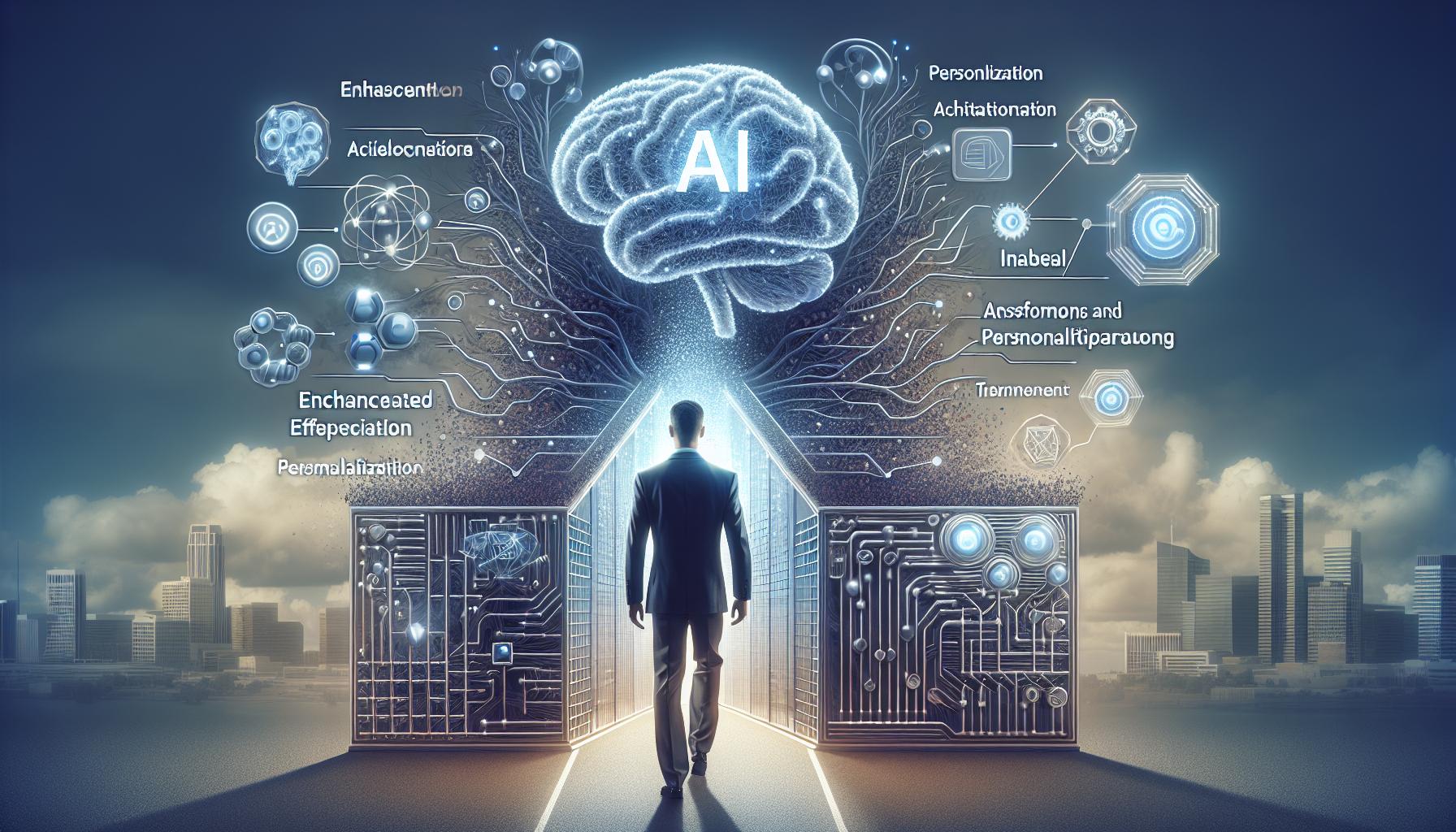The Paradigm Shift in App Development: Embracing AI-First Architecture for Enhanced Efficiency and Personalization

The Paradigm Shift in App Development: Embracing AI-First Architecture
The way applications are built is undergoing a seismic shift, transitioning from traditional Software as a Service (SaaS) stacks to an AI-first architecture. This transformation is propelled by several key drivers that are changing the landscape of app development, driven by the need for enhanced user experiences, increased efficiency, data-driven decision-making, scalability, and cost optimization. Here we explore these evolving trends and how they are reshaping the future of software development.
Enhanced User Experience and Personalization
AI and Machine Learning (ML) models, particularly large language models (LLMs), provide unprecedented levels of personalization and context-aware interactions. These advanced technologies allow businesses to deliver highly tailored experiences that adapt to individual user preferences and behaviors in real-time. The ability to personalize content and interactions significantly boosts user satisfaction and engagement, creating a more immersive and gratifying experience for the end-users.
Efficiency and Automation
The adoption of AI-first architectures enables greater automation of tasks and processes. By integrating LLMs and ML models, businesses can streamline operations, reduce manual workloads, and enhance overall efficiency. Routine processes that once required extensive human intervention can now be automated, allowing employees to concentrate on more strategic and creative tasks. This shift not only improves productivity but also fosters innovation within the organization.
Data-Driven Decision Making
AI-first architectures make extensive use of vast amounts of data to provide actionable insights and predictive analytics. This capability empowers businesses to make more informed decisions, optimize strategies, and anticipate market trends. The continuous learning and adaptation of A.I. models ensure that insights remain up-to-date and relevant, giving organizations a competitive edge in a rapidly changing marketplace.
Scalability and Flexibility
One of the significant advantages of AI-first architectures is their inherent scalability and flexibility compared to traditional SaaS stacks. These systems can dynamically adjust to varying loads and demands, making them suitable for a wide range of applications and industries. This flexibility allows businesses to rapidly deploy new features and services without the need for extensive reconfiguration, thus accelerating time-to-market and fostering agility.
Cost Reduction and Resource Optimization
By automating complex processes and optimizing resource utilization, AI-first architectures can lead to significant cost savings. The ability to process and analyze large datasets efficiently reduces the need for extensive hardware investments and manual data handling. Consequently, businesses can achieve more cost-effective operations and allocate resources more strategically.
Conversational APIs as the Default
Conversational APIs, powered by LLMs, are rapidly becoming the default due to their capability to facilitate natural and intuitive interactions between users and systems. These APIs enable seamless integration of conversational capabilities into various applications, simplifying the development and deployment of chatbots, virtual assistants, and other conversational interfaces. The rise of conversational APIs is driven by several factors:
- Improved Natural Language Understanding (NLU): Advanced NLU capabilities enable systems to understand and respond to user inputs with high accuracy, enhancing the overall user experience.
- Ease of Integration: Conversational APIs offer straightforward integration with existing systems, enabling businesses to add conversational interfaces without significant redevelopment.
- Cross-Platform Compatibility: These APIs support multiple platforms and devices, ensuring consistent user experiences across web, mobile, and other interfaces.
Voice, SMS, and Email Interfaces
The integration of voice, SMS, and email interfaces is revolutionizing how users interact with systems. These communication channels are becoming increasingly prominent due to their convenience and accessibility:
- Voice: Voice interfaces offer hands-free, intuitive interactions, making them ideal for on-the-go use and accessibility purposes. The growing adoption of voice-activated assistants like Siri, Alexa, and Google Assistant underscores the importance of voice interfaces.
- SMS: SMS interfaces provide a simple and ubiquitous communication method accessible on virtually all mobile devices. They are particularly effective for quick updates, alerts, and customer service interactions.
- Email: Email remains a critical communication tool for both personal and professional use. Integrating A.I. capabilities into email interfaces enhances productivity by automating responses, sorting messages, and providing context-aware suggestions.
Embracing AI-First Architecture: Major Considerations for Existing Apps
For existing applications built on traditional SaaS architecture, the shift to an AI-first approach presents a crucial crossroads. These applications must decide whether to fully embrace A.I. as the core architecture or simply incorporate it as an additional layer.
Full Adoption of AI-First Architecture
- Comprehensive Transformation: Embracing A.I. as the foundation means re-engineering the app to leverage A.I. capabilities deeply integrated across all functionalities. This ensures that all aspects of the application benefit from AI-driven enhancements.
- Competitive Advantage: Fully adopting AI-first architecture provides a competitive edge through more advanced personalization, automation, and data-driven insights, thereby delivering superior user experiences.
- Scalability and Flexibility: A ground-up redesign incorporating A.I. offers better scalability and flexibility, allowing the application to adapt more dynamically to changes in user demands and market trends.
- Long-Term Gains: Although the initial investment in transitioning to an AI-first architecture is significant, the long-term benefits in operational efficiency, cost savings, and user engagement are substantial.
Quick Fix Approach: Adding A.I. on Top
- Limited Integration: Adding A.I. capabilities as an overlay can be quicker and less costly initially. This approach involves integrating pre-built A.I. solutions or APIs to add specific functionalities without overhauling the entire system.
- Short-Term Benefits: This method offers immediate improvements in user experience and operational efficiency. It can serve as a stop-gap solution to keep up with competitors while planning a more comprehensive A.I. strategy.
- Potential Constraints: However, this approach may introduce limitations in scalability and may not fully leverage the potential of A.I. across all application functionalities. It might result in fragmented rather than holistic improvements.
- Technical Debt: Over time, maintaining and updating this patchwork system could incur technical debt, leading to increased complexity and higher costs in the long run.
Conclusion
The shift to an AI-first architecture, supported by conversational APIs and multi-channel interfaces, is driven by the need for more personalized, efficient, and scalable solutions that enhance user experiences and optimize business operations. For existing applications, the decision between fully embracing this new paradigm or opting for partial integrations is critical. While the full adoption of AI-first architecture promises long-term benefits and a significant competitive edge, a quick fix approach can provide immediate advantages with lower initial costs. Businesses must carefully evaluate their goals, resources, and future vision to make the best choice in navigating this transformative shift.
The future of app development is undeniably leaning towards an AI-centric approach, promising exciting innovations and transformative outcomes across industries.




